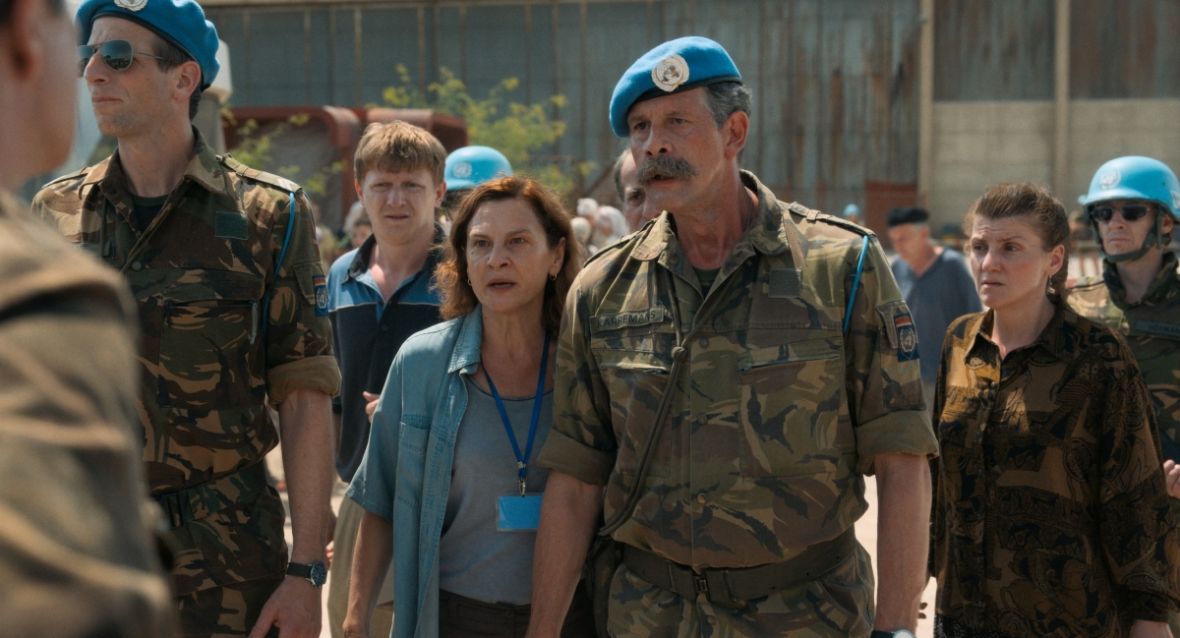By Chilimovie - 28 July 2021

This Bosnia-Herzegovina film "Quo Vadis, Aida?", which has been nominated by the Oscar for "Best International Film", is artistically quite satisfactory. The main purpose of watching it is to allow you to understand the history of "genocide" that has passed by less than 30 years. .
The War in Bosnia and Herzegovina took place from 1992 to 1995. It was the culmination of the precarious situation of political independence and secession in various regions of Yugoslavia that began in 1990. The "slaughter" reproduced in the film took place in July 1995 during the second phase of the war.
I remember that at that time, the former Federal Republic of Yugoslavia had not completely disintegrated. It should be a certain month in 1994. At that time, Belgrade was a peaceful scene. The film festival was held in a huge cultural palace with a large audience; each film must be played before the production country. National anthem. Unexpectedly, at that time, Bosnia and Herzegovina, south of Yugoslavia, was undergoing the largest local war on the European continent after World War II, namely the armed conflicts between the Muslims, Serbs, and Croats. NATO and the United Nations all intervened in mediation, but they still couldn’t. Preventing the deterioration of the situation and directly leading to the complete disappearance of the name of Yugoslavia and the direct split into the current status quo of five independent countries.
The historical facts of the massacre recorded in this movie are:
"The Massacre
Srebrenica is located in the eastern part of Bosnia and Herzegovina. It is an "enclave" where Muslims live, with more than 30,000 original residents. In June 1993, during the Bosnia-Herzegovina War, the United Nations Security Council declared that Sarajevo, the capital of Bosnia and Herzegovina, and Srebrenica were designated as “safe areas” and designated these “safe areas” as “demilitarized areas” and should not be subject to Armed attacks by any party and any hostilities occur. However, these regulations have not been complied with by all parties involved.
On July 11, 1995, Bosnia-Herzegovina Serb forces captured Srebrenica and announced the establishment of local power. The UN Security Council subsequently passed a resolution hoping that the Serbian army would withdraw from the area, unconditionally release the detained peacekeepers, and rebuild the UN security zone there, but the Serbs resolutely refused. Beginning on the 12th, the Serbian side will massacre all the Bosnian men living in Srebrenica, leaving no one behind. A large number of Bosnian women have been raped, and pregnant women have their belly opened. History is known as the Srebrenica massacre. Because of such things, the Bosnians and Serbs between the two regions still have an indelible gap and knots.
After the war in Bosnia and Herzegovina, the Bosnia-Herzegovina Muslim Missing Population Committee found many burial pits in Srebrenica and exhumed thousands of bodies. For a long time, the Bosnia and Herzegovina government has denied the massacre in Srebrenica until it admitted it in June 2004. On October 14, 2004, the Bosnia-Herzegovina Government Investigation Committee issued an investigation report acknowledging that after the Bosnian Serb army and police forces captured Srebrenica in July 1995, they released some women and children, but killed 7,000. There are more than Mu men. "
The film takes a female teacher from Bosnia and Herzegovina who is a translator for the UN peacekeeping force as the protagonist. From her perspective, she directly witnessed and encountered this "genocide", which is similar to the Russian film "Dear Comrade".
Learn about history and reflect on the past. This should be the most important thing we should do for our cultural and artistic works, especially the influential film form.


